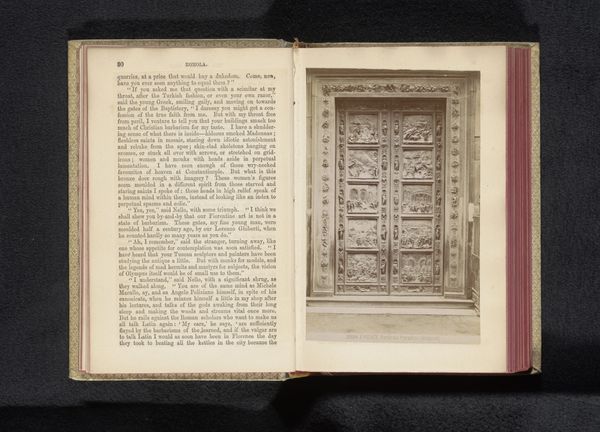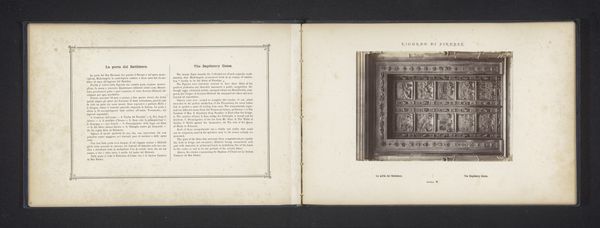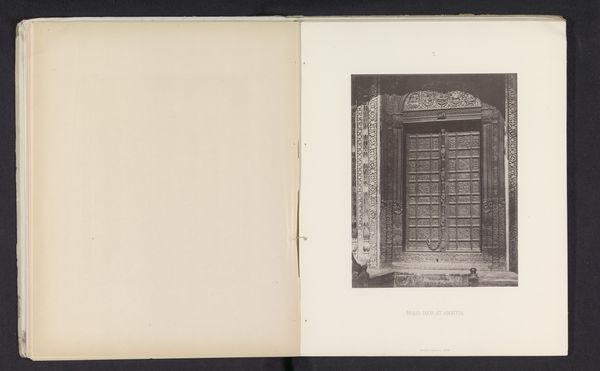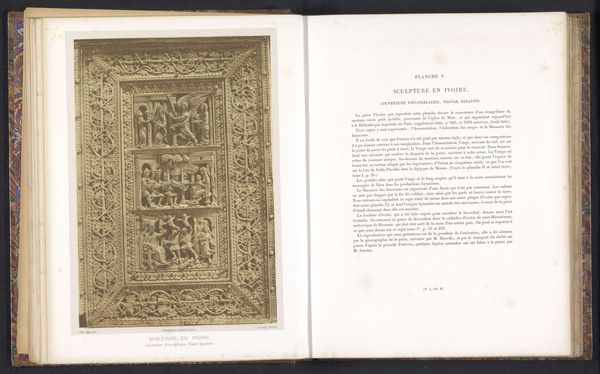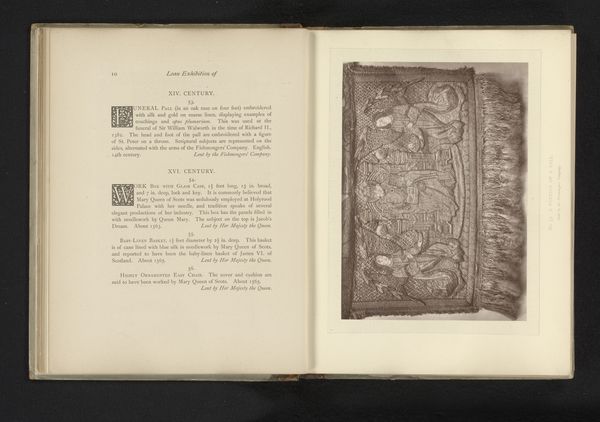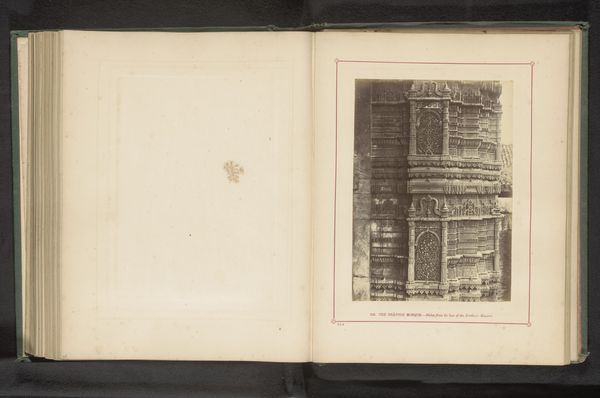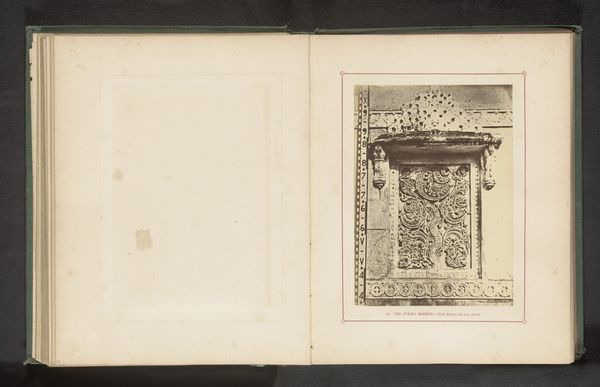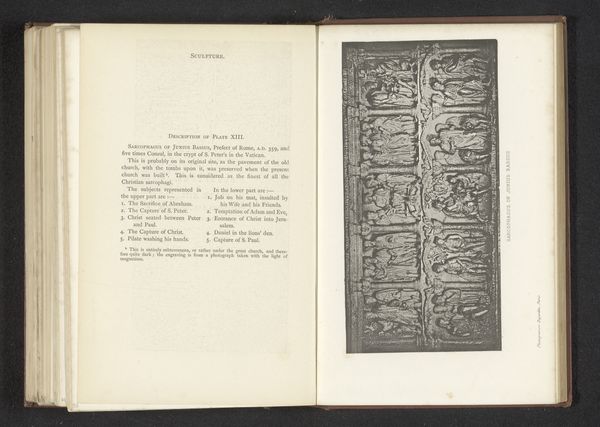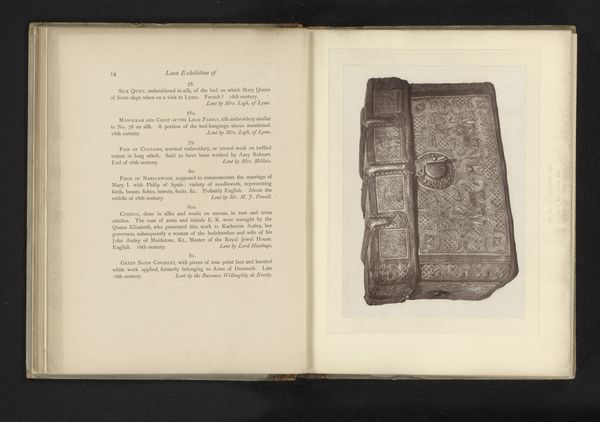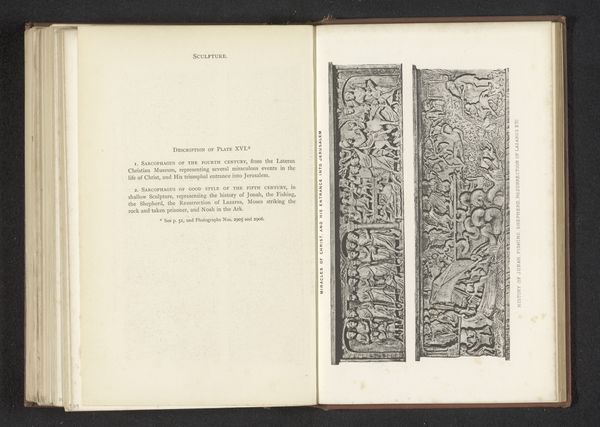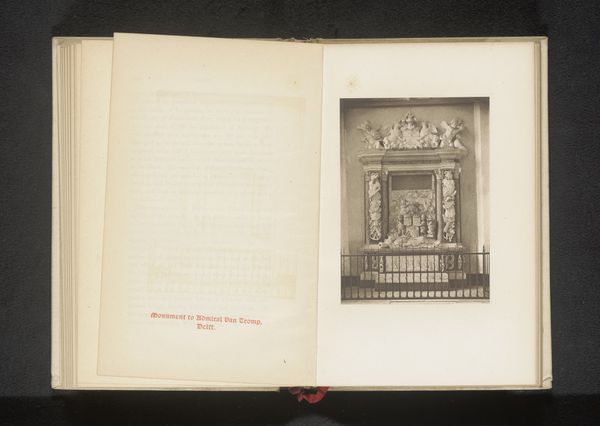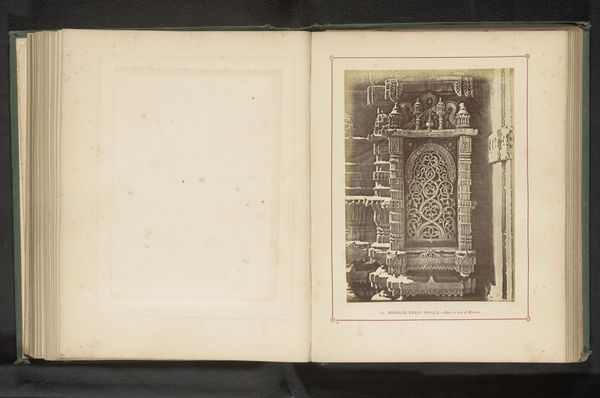
print, bronze, photography, sculpture
# print
#
bronze
#
11_renaissance
#
photography
#
sculpture
#
italian-renaissance
Dimensions: height 132 mm, width 97 mm
Copyright: Rijks Museum: Open Domain
Curator: Looking at this photograph by Giacomo Brogi, taken sometime before 1863, we see “The Paradise Door” by Lorenzo Ghiberti, installed on the east side of the Baptistery of Florence. Quite magnificent. Editor: Absolutely. It’s immediately striking how the photographic print renders the bronze. It emphasizes texture and detail—the doors appear so deeply worked, layered with figures emerging almost three-dimensionally. Curator: Indeed. Ghiberti worked on these doors for over 25 years, with a large workshop of assistants, each playing their specific role in the division of labor required for the gilded bronze relief. The framework of artistic workshops and bronze-casting techniques influenced his contemporaries such as Donatello. Editor: What catches my eye are the clear, classical compositions in each panel. Look at the balance, the way each scene is so deliberately arranged to draw your eye to the key figures and narratives. And the bronze—such a compelling choice, capable of capturing subtle variations in tone and form, enhancing its artistic merit. Curator: Of course, Ghiberti's piece profoundly shaped the perception and market for artistic productions. The guilds, the bronze casters, the commissioning system of the wealthy families—all deeply enmeshed in the cultural and economic life of Florence. This also highlights how Italian Renaissance art, initially produced in Europe, entered global circuits as the print reproduces an image of it. Editor: Yes, and there’s this powerful convergence here, too: architecture, sculpture, and biblical narrative, harmonized. Notice the articulation of space—Ghiberti's treatment gives depth and realism to scenes rendered in such high relief. This is as much a study of the human form as it is a celebration of faith. Curator: We begin to see how workshop systems supported artists and reinforced prevailing tastes. Ultimately this highlights how aesthetic and economic value became inextricably linked with particular forms of skill and social identity. Editor: Well said. It’s fascinating to trace the impact that this single piece had on visual culture, the material, technical skills, and narrative conventions developed that rippled through subsequent generations.
Comments
No comments
Be the first to comment and join the conversation on the ultimate creative platform.
